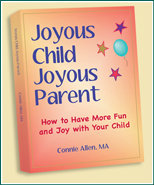The Happy Planet Index is an innovative new index that measures the environmental efficiency with which country by country, people
live long and happy lives.
By addressing the relative success or failure of 178 countries in supporting
good lives for their citizens, while respecting the environmental resource
limits upon which our lives depend, the HPI can help us move toward a world where we can all live
good lives without costing the earth.
The nations that top the Index aren’t the happiest places in the
world, but the nations that score well show that achieving, long, happy
lives without over-stretching the planet’s resources is possible. The
HPI shows that around the world, high levels of resource consumption do
not reliably produce high levels of well-being (life-satisfaction), and
that it is possible to produce high levels of well-being without
excessive consumption of the Earth’s resources.
It also reveals that
there are different routes to achieving comparable levels of
well-being. The model followed by the West can provide widespread
longevity and variable life satisfaction, but it does so only at a vast
and ultimately counter-productive cost in terms of resource
consumption.
No single country listed in the Happy Planet Index has everything right. Some countries are more
efficient than others at delivering long, happy lives for their people. Every country has its problems and no country performs as well as it could.
Vanuatu, an archipeligo in the Western Pacific made up of 65 island and 250,000people, is the happiest nation on the planet These results are based on consumption levels, life expectancy and happiness, rather than the national economic wealth measurements such as the Gross Domestic Product (GDP).
Other top-scoring countries in order are Columbia, Costa Rica, Dominica, Panama, Cuba, Honduras, and Guatemala. Countries at the bottom are Zimbabwe, Swaziland, Burundi, Congo, Ukraine, Estonia, and Russia. The United States is 150 out of 178.
As you can see, this is not your usual list of national success, but the HPI Index paints a compelling picture ad challenges us to look at our deepest values as humans. They have a report that gives you all the details here. The ranking list is at the very end after extensive page of background big picture information.


 Just a little bit about me -- I'm a coach for parents, visionary guide, insightful trainer, and powerful consultant.
Just a little bit about me -- I'm a coach for parents, visionary guide, insightful trainer, and powerful consultant.